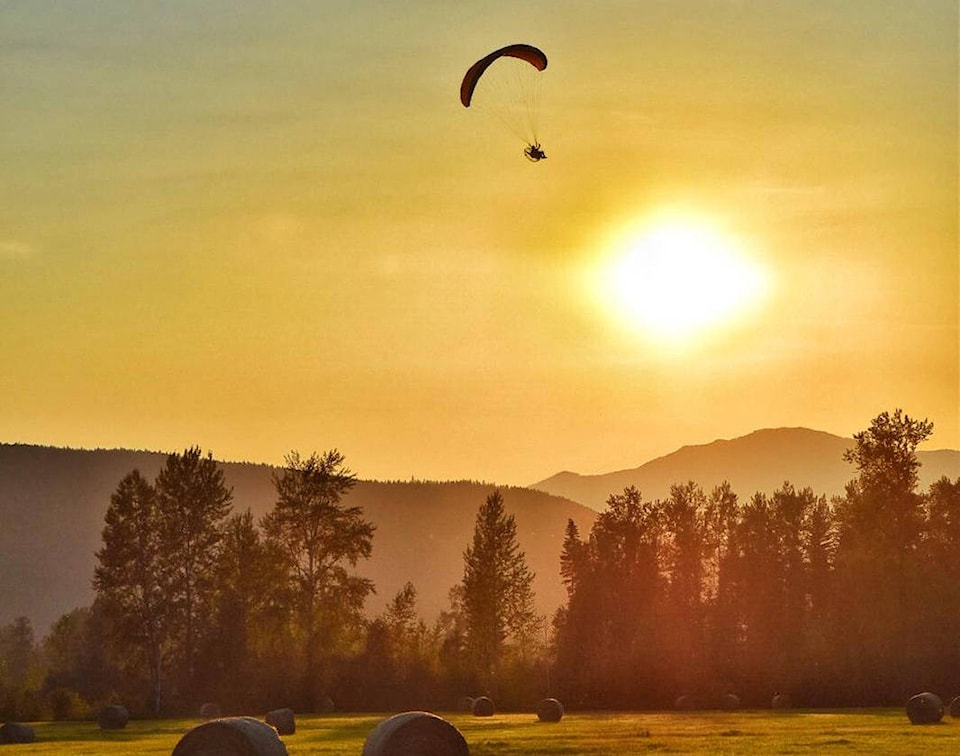Paragliding is a young sport. It started throughout the ’50s and ’60s, but it wasn’t until the ’80s where the technology and design behind the equipment would begin to improve and the sport would take off. Over 40 years later, the telltale “wing” is much safer than its ’80s counterpart, allowing pilots to fly higher, longer and farther.
It can be a fascinating sight, looking up to the sky, watching the wings soar across the sky, the bodies dangling underneath, as they give in to Mother Nature as she lifts them up.
“You work with Mother Nature and you have to be very respectful for that,” said Willy Rens, owner and operator of X Sky Paragliding. “She’s a lot stronger than we are.”
ALSO READ: El Nido Fly-in flies again
The weather assessment is key, he added. It’s checked before leaving, upon arrival and again before taking off. Mornings are the best time to fly, as they offer a smooth ride and optimal conditions for thermals — columns of warm, rising air.
Thermals are the bread and butter of a good paragliding flight.
They lift the pilots up and allow them to fly long periods of time at farther distances. Over the years, many records have been broken. Pilots take off from sites in the area such as Birch Island and can fly 60 to 95 kilometres away — or more.
Triangles are competitive flights pilots can take, where every turning point in the triangle is the same distance, within five per cent. The best triangle done in the area was by a hang glider at 66 kilometres. The three turning points were the Clearwater roundabout, hole-in-the-wall road in Vavenby and towards Dunn Peak.
ALSO READ: X Sky Paragliding’s El Nido Fly-in has best year yet
“It is a very difficult thing to do,” said Rens.
Competition or not, it all comes back to the love of flying.
One can argue Rens has spent just as much time in the sky as he has on the ground. His older brothers got him into the game early in life, dragging him to their events as members of the Belgian national sky dive team.
He said he remembers standing in the plane as a boy, staring out the door at them as they soared back down to earth.
“That’s really where the love for flying started — I’m 100 per cent sure,” said Rens.
But it wasn’t until a bit later in life when he would find paragliding. One of his brothers took him up in an ultra-light aircraft (a small, basic aircraft with no more than two seats), which he continued for some time. In his mid-20s, he would be introduced to the world of paragliding.
ALSO READ: Beautiful birds spotted at Birch Island
“We went to a meeting and there was ultraflying and paragliders with a motor on the back — paramotoring,” said Rens. “I was like, ‘Okay, now it’s time to get into this,’ so I bought a wing right there…I’ve never had an engine on my back and I was like, ‘This is so pure, there is no noise around you, this is just working one with nature,’ because that’s really what you do and I was like, ‘This is it. I don’t need anything else.”
The community is used to seeing paragliding pilots in the skies. The most recent fly-in, taking place earlier this month during the first heat wave, is in Birch Island and is called El Nido (or el nido del condor, which translates to the nest of the condor).
Rens said the most exciting is flying in a pack, like the fly-ins, because it’s safer as you can look after one another, and there are more bodies in the air to find thermals. He added that pilots usually peform better and fly longer and farther as a group.
Even with the added safety, there is still risk, just like any other extreme sport, like white water rafting, snowboarding, hiking and others commonly found in the North Thompson. But that shouldn’t deter those who want to experience flight, said Rens.
“When I started, it was scary,” he said. “The wings are a lot more solid (now), a lot more knowledge, better trained pilots, way better courses now than 40 years ago — all these things add up to safety…if you know, you’re not afraid.”
newsroom@clearwatertimes.com
Like us on Facebook and follow us on Twitter
